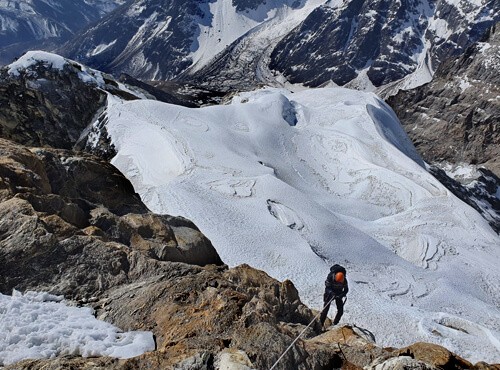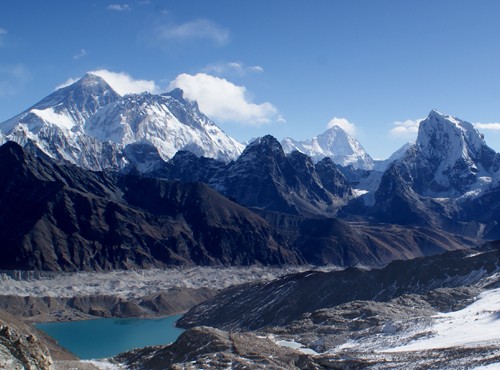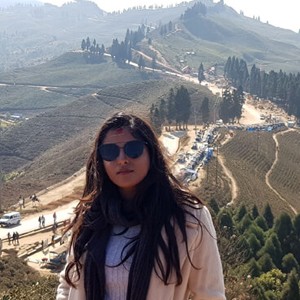Nepal is a trekking hub for adventure lovers and hikers. Many of you must have kept traveling to Nepal as a bucket list. Getting to the base camp of Mt. Everest to explore the Himalayan ranges of Nepal, you have got lots of options to choose from here. Trekking is itself challenging, and packing for Nepal adds to it. You have to ensure the clothing is enough for every season and lightweight to carry. There are some essential things that you should add to the packing list for Nepal. You can bring only the necessary item with you during your trek. Some of the items can be purchased or rented in Nepal. The clothing gear depends on how long the trekking. For example, for the Everest Base Camp, Everest Base Camp Budget Trek, Gokyo Renjo La Pass Trek, you will need more warm clothes than Poonhill Trek, Mardi Trek as they are much longer treks.
Nepal Trekking Packing List
Table of Contents
The Nepal trekking packing list provided below is a broad guideline. You could use this list as a reference.
Trekking Bags:
- Duffel Bag: It is good to have a duffel bag if you take a porter with you during the trek. Have a bag that is durable and waterproof.
- Rucksack Bag: The bag size should be according to the trekking duration. You will never know when it will rain so carry a waterproof rucksack bag.
Clothing:
Upper Body
- T-shirts: Take the lightweight T-shirt both long and short sleeves, and it would be better to have synthetic T-shirts rather than cotton T-shirts.
- Lightweight thermal tops: Lightweight thermal tops will keep your body warm while also wicking away moisture.
- Pullover or Fleece Jacket: A fleece jacket is constructed of polyester synthetic wool, such as Polar Fleece, and is lightweight. Instead of buttons, it usually has a zipper up the middle. Because it is not normally weatherproof, you can use it as a second layer for added warmth.
- Waterproof jacket: It's best to have a waterproof, breathable shell with a complete front zipper. A hooded waterproof nylon or Gore-Tex jacket is necessary. This outer layer shields you from the elements such as wind, rain, and snow.
- Synthetic sports bras for women: A synthetic sports bra is recommended for female trekkers. It's because a decent sports bra will wick sweat away from your skin. During the trekking season, it is not advisable to wear jeans or cotton apparel. They are inconvenient to trek through. They also won't absorb moisture, restrict airflow, and dry slowly.
Lower Body
- Undergarments: Underwear that is lightweight, breathable, and moisture-wicking is advised. As you climb higher, long underwear will keep you warm.
- Shorts for hiking: On a sunny day, it might get hot, especially if you're trekking at lower levels. In addition, your tracksuits will make you feel uneasy. Hiking shorts can be used instead of trekking pants during day walks since they are cooler.
- Lightweight walking pants: While trekking, lightweight nylon pants are preferable. They are permeable to the air, dry rapidly, and offer sun protection. Because it can get hot in the afternoons, you can get convertible ones.
- Pants made of fleece or tracksuits: Throughout the trekking period, you will experience temperature changes. As a result, track pants can be worn around the tea house and for sleeping.
- Waterproof Shell pants: You will encounter rain or snow if you go on a hike during the wet or winter seasons. So, to stay dry, you'll need waterproof or windproof shell pants.
Footwear
- Thin inner socks: Moisture-wicking socks are available to keep your feet dry. Hiking socks must be breathable, so stay away from anything made of cotton.
- Thick warm wool hiking socks: You'll need thick, warm wool hiking socks for the trek's colder sections. They are extremely warm, quite comfy, and will prevent your feet from blistering.
- Boots for hiking: The terrain can be extremely difficult and rocky, therefore hiking boots are recommended. If you purchase the incorrect hiking boot size, it will have a significant impact on your excursion and make you uncomfortable throughout it. Leather boots should be avoided since they are extremely heavy. Instead, you should go for a boot with full ankle support and waterproof.
- Sandals for Camp: For evening walks about camp or to the tea houses, you can wear camp sandals. It will also provide relief for your feet from the weight of your walking boots. In addition, you can use these sandals for camp activities such as showering.
- Walking poles: Walking poles can assist you in balance while also reducing the pressure on your knees. Trekking in Nepal is best done using lightweight walking poles that are easy to store, adaptable, and sturdy.
Handwear
- Lightweight fleece gloves: When the weather is moderate, lightweight fleece gloves can be utilized as inner gloves.
- Heavyweight gloves: For more warmth when the weather becomes colder, you'll need heavyweight gloves. It must be waterproof and long-lasting and resistant to wind, rain, and snow.
- Gloves that are both waterproof and windproof: Your outer gloves should be waterproof, warm, and long-lasting.
Headwear
- Woolen Hat: You may not need these unless you are trekking at a very high altitude or in the winter, as it is hot throughout the day. However, once the sun sets and the temperature drop, you may require this for warmth. It is recommended that you wear a warm wool hat made of synthetic material that protects your ears.
- Sun Hat: When hiking on a sunny day, it is essential since it protects you from sunburn and provides shade.
- Scarf or bandana: Many trekking trails, especially at lower altitudes, are dusty. So you can tie a scarf around your nose and mouth to shield yourself from dust and the wind.
- Sunglasses: Due to the thinness of the air, a good pair of UV-protected sunglasses is suggested. You will be exposed to high-intensity UV rays at high altitudes, which might injure your eyes. As a result, UV protection sunglasses are required to avoid headaches, dizziness, and snow blindness.
Sleeping Accessories
- Sleeping bag: Because nights in Nepal, particularly in the highlands, can be bitterly cold, the mountain lodges' blankets may not be sufficient. As a result, we recommend that you bring a duck or goose-down sleeping bag with you. A sleeping bag with a two-way zipper provides excellent insulation. Make sure your sleeping bag has an insulated hood and that it suits your body contours.
- Pillow Case and Other Night Accessories: You can bring your inflatable cushion for added comfort at night. You'll need a good night's sleep after a hard day of hiking. So, if you don't want to be disturbed by snores or other noises, bring earplugs with you.






